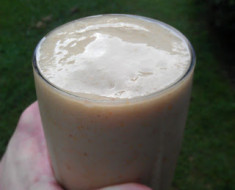There are many recipes out there that claim their recipe is genuinely Vegan but honestly, who is checking on the fine ingredients. All too often, ingredients can contain GMOs that aren’t being totally truthful about their practices and how they’re produced. Here are some tips to look for when making pizza dough fool the senses and still deliver you 100% Vegan-friendly ingredients.
WHAT ARE YOUR INGREDIENTS HIDING FROM YOU?
Eating healthy is one thing but when it comes to keeping a Vegan diet, the information about Vegan-friendly foods isn’t always being totally honest with you. The problem isn’t with the main ingredients on the surface that you can immediately see, it’s also from the methods of production that bring you the ingredients that go into foods you want to prepare that start getting murky.
It’s enough to keep you awake at night wondering if you just got red-pilled about the truth of hidden ingredients in your foods that aren’t so.
Vegan-friendly after all. Well, when it comes to pizza dough and making vegan pizza, we’ve done our homework. Now it’s time to share how you can avoid non-vegan ingredients to make pizza dough that will knock your socks off. The story and pizza you can share with your friends might just change their minds.
THE ESSENTIAL INGREDIENTS OF VEGAN PIZZA DOUGH

Right away, you’ll see ingredients here that seem fairly common and don’t raise any warning bells. Each ingredient however will tell you something you didn’t know about them and what you can do to avoid making a big mistake when using them according to brands.
Pizza flour (type 00)
Pizza flour is made from wheat and often when the topic of finely milled pizza flour gets even more specific. Pizza flour is made from the whitest tips of wheat and is then processed to make extra-fine flour. Since most people like thin crust pizza, type 00′ is commonly about 12.5% protein, then it will not be super-spongy like the thicker American Style pizza we all know and love.
This is why many pizzeria owners use bread flour to get thicker crusts that rise like cake with 13% and higher protein content. This is what helps to produce gluten and makes pizza dough have texture and bite. But as we all know, gluten is a naturally forming element that occurs in flour when you make dough. But often, this comes up from many Vegans who make claims that it’s not vegan-friendly. Take a look at this vegan pizza recipe for more ideas on building a AIP pizza.
The best pizza flour is rated at (type 00) for fineness. That’s all good and fine except that most people forget that wheat is also grown in mass quantities all over the world. You have to do your homework to ensure that your pizza flour is not coming from fields with GMOs containing genetically modified wheat. GMOs contain both plant and animal genetic material to produce wheat that’s more resistant to insects and bad weather.
It’s a problem with many advocates who look at this problem from an ethical point of view. So, this brings up the main problem with finding pizza flour that is GMO-free. A couple of great brands to look for include King Arthur Pizza Flour and Central Milling (00-organic) Flour.


You can be sure these pizza flour choices do not contain any GMOs whatsoever.
Yeast
No matter what kind of yeast you use, whether it’s baking yeast or dry yeast packets, it’s not a living organism. It’s a fungus that lives from eating sugar, so therefore it’s perfectly fine to use in making vegan pizza dough. The problem only starts when you use sugar to help activate the yeast faster than normal yeast activation methods. Most people only add a pinch of sugar to get yeast to activate, while other people just like using warm water.
Sugar
When it comes to sugar, you need to stay clear from using refined sugar. In particular, especially the sugar made from cane sugar. This sugar needs to be refined using bone char as a bleaching agent while it’s filtered with charcoal. Bone char is made from animal bones and is certainly not Vegan-friendly. You can substitute other sugar that’s made from beet and doesn’t need whitening after it gets refined.
Salt
Natural cooking salt that you use in the kitchen may contain additional products, so choosing a natural salt with fewer additives can be hard to find. Natural sea salt is always a big question due to the ethics of potentially trapping small sea animals in large pools to let it evaporate. However mined salt also contains left-over sea creatures that died millions of years ago, so once again it’s an ethical question.
If you want to use salt that is 100% vegan-friendly, you’ll find that buying Himalayan pink salt will be pricy but is surely healthier than regular salt that might have additives you don’t want in you.
Olive Oil
The only olive oil you should use for making any kind of pizza dough is extra virgin olive oil (EVOO) which is the most faithful method for getting pure processed oil. There are no additives or extra refining methods that go into getting EVOO, but the cost is substantially higher depending on which brand you buy. Since there are so many to list, stick to Kirkland organic extra virgin olive oil that’s a favorite for pizza makers. It’s also a great price likewise.

MAKING YOUR VEGAN PIZZA DOUGH

• 500 Grams flour (type 00)
• 1 tablespoon organic salt (Himalayan sea salt)
• 3 grams yeast (instant or fresh baking yeast)
• 1 pinch sugar (Beet sugar)
• 1- 1¼ cup warm water (filtered tap water only)
• 2 tablespoons organic olive oil (EVOO)
INSTRUCTIONS FOR MIXING

In a small bowl take your yeast and add this with a pinch of sugar and less than a cup of warm water. Mix it together and let it start to activate for 5 minutes or until it starts to get frothy. While you are waiting, use a powdered sugar sifter to put your flour into a large plastic bowl. This will help with the initial hydration of your flour. When this is done, add your yeast mixture followed by the remaining water in your measuring cup.
Use a mixing spoon to combine the water and flour and slowly add your salt and olive oil while mixing. As this mixture gets thicker, you may need to use your hands to start kneading the dough. Knead this mixture on a clean smooth surface for 10-15 minutes until you have a nice and elastic mixture. Add a tiny bit of water if your mix is too dry. Take a second bowl and rub the inside of the bowl with EVOO to coat the sides all over.
Add your dough ball into the bowl and cover with a clean damp towel. Put this bowel somewhere in your kitchen where the temperature is slightly above room temperature. Now let it rise and expand for at least 45 minutes to an hour. It will double in size and this is when you need to check it for the poke test’. By poking it with your index finger- and it stays indented, it’s ready to separate. Cut your dough into four equal pieces for self-serve pizzas.
Cut this ball in half to make two large pizzas if you prefer. But aside from this put these onto a cooking tray and give them enough space to expand around each other. Cover these dough balls again with a damp towel and let them sit for 3 hours. This allows your dough to develop a richer flavor that tastes just like the professional pizzeria dough will taste. It also helps develop the right amount of gluten for your dough.
PREPARE YOUR DOUGH

You take each piece of dough after it’s been proofed and then spread it out using your hands starting from the center. Don’t use a rolling pin, just lightly press the dough outwards to make your pizza dough shape. Stay clear of the edges so there’s a rounded rim edge at least -inch to -inch border all around the outer edge. After this, you now can start adding your sauce and toppings and then cook your pizza. You’ll be amazed by this 100% vegan dough!






